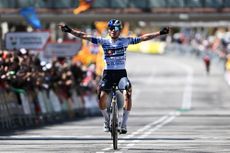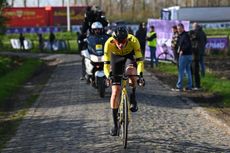Carb conundrum

In the Autumn issue of Cycling Fitness the article “Stomaching Success” on page 78 tackled the complicated issue of different carbohydrate sources in energy products, and how your body responds to them. The article looked at the risk of energy gels with a single source of carbohydrate, being more likely to cause stomach problems during long races.
However, carbohydrates are not all absorbed in the same way meaning that some single source gels can be isotonic and easy on the stomach.
We spoke to Emma Barraclough, senior sports nutritionist, at Science in Sport (SiS) to clarify. She said: “Simple sugars such as glucose and fructose have a higher osmolality than longer chain molecules such as maltodextrin, which is what Science in Sport products are based on.
“A higher quantity of water is needed with a simple sugar to make it isotonic. This means simple sugars have a higher risk of stomach upset as they empty much more slowly from the stomach and water is retained with it there. The bacteria in the gut also feed off simple sugars and this can lead to gas and bloating.
“However the maltodextrin in an isotonic formulation means that gastric emptying is maximised, to deliver energy quickly with minimal risk of causing gastric distress, and therefore there is no need to ‘only consume one or two in an event’, as suggested in the article.”
Barraclough explained further: “At Science in Sport we select a very specific type of maltodextrin with an atomic weight of 52,000 to allow us to create a unique and patented isotonic gel formulation, which has an osmolality of 281 mmol/kg, sitting very clearly in the isotonic range. The article described beverages with an osmolality of under 290 mmol/kg as ‘perfect’.”
When it comes to choosing the right gel formulation for you, the length of event you are taking part in also needs to be taken into consideration.
Get The Leadout Newsletter
The latest race content, interviews, features, reviews and expert buying guides, direct to your inbox!
According to Barraclough, 2:1 gels — two parts maltodextrin one part fructose — containing fructose are best suited to long distance events.
“Fructose is a low glycaemic index carbohydrate, meaning that the energy from it is slowly available. Whereas glucose is readily absorbed and can be used directly, fructose has to be digested, absorbed, and then processed by the liver before it is in a format the muscles can use to produce energy,” said Barraclough.
“This process typically takes at least 90 minutes, and glucose receptors must be fully saturated for this to occur. It is therefore not very suitable for high intensity exercise when you need the energy quickly as high rates of energy production are needed.”
Always experiment with energy products in training or at a minor event before you decide which to use on your key event. As much as possible try to use products in the same conditions as you will on race day, so you learn how your body will react to them. You may need to try several different brands before finding the formulation and flavour that works best for you.

Thank you for reading 20 articles this month* Join now for unlimited access
Enjoy your first month for just £1 / $1 / €1
*Read 5 free articles per month without a subscription

Join now for unlimited access
Try first month for just £1 / $1 / €1
Founded in 1891, Cycling Weekly and its team of expert journalists brings cyclists in-depth reviews, extensive coverage of both professional and domestic racing, as well as fitness advice and 'brew a cuppa and put your feet up' features. Cycling Weekly serves its audience across a range of platforms, from good old-fashioned print to online journalism, and video.
-
 Can anyone stop Primož Roglič or Juan Ayuso from winning the Giro d’Italia?
Can anyone stop Primož Roglič or Juan Ayuso from winning the Giro d’Italia?Roglič and Ayuso's form suggest they are the two outright favourites for overall victory in Rome next month
By Tom Thewlis Published
-
 How to watch Dwars door Vlaanderen 2025: Everything you need to live stream the cobbled Belgian Classic
How to watch Dwars door Vlaanderen 2025: Everything you need to live stream the cobbled Belgian ClassicAll the information on broadcasters and live streams for Dwars door Vlaanderen on 2 April, as Wout van Aert, Mads Pedersen, Marianne Vos and Lotte Kopecky take on the cobbles.
By Tom Davidson Published